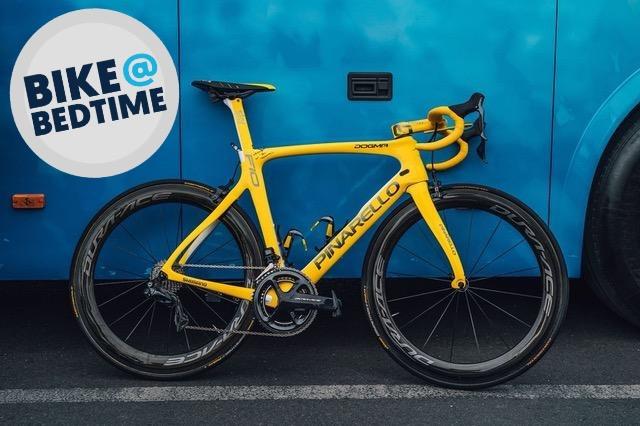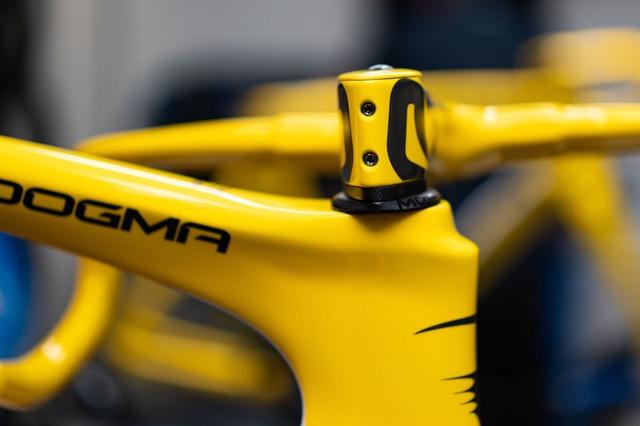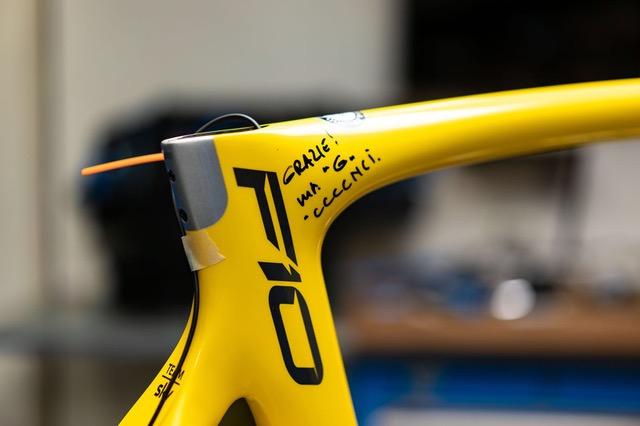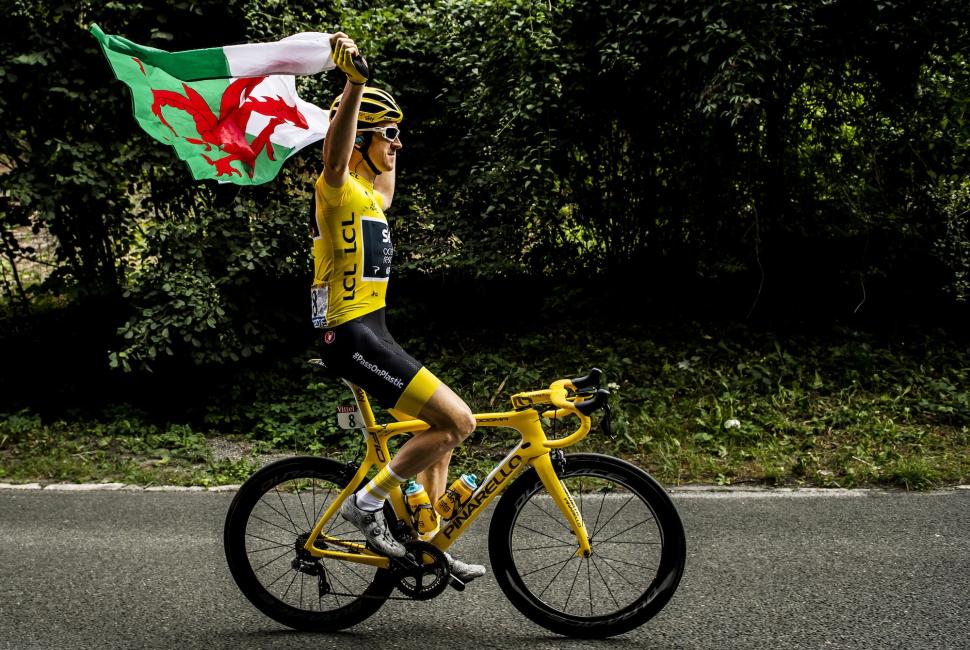- News
- Reviews
- Bikes
- Components
- Bar tape & grips
- Bottom brackets
- Brake & gear cables
- Brake & STI levers
- Brake pads & spares
- Brakes
- Cassettes & freewheels
- Chains
- Chainsets & chainrings
- Derailleurs - front
- Derailleurs - rear
- Forks
- Gear levers & shifters
- Groupsets
- Handlebars & extensions
- Headsets
- Hubs
- Inner tubes
- Pedals
- Quick releases & skewers
- Saddles
- Seatposts
- Stems
- Wheels
- Tyres
- Tubeless valves
- Accessories
- Accessories - misc
- Computer mounts
- Bags
- Bar ends
- Bike bags & cases
- Bottle cages
- Bottles
- Cameras
- Car racks
- Child seats
- Computers
- Glasses
- GPS units
- Helmets
- Lights - front
- Lights - rear
- Lights - sets
- Locks
- Mirrors
- Mudguards
- Racks
- Pumps & CO2 inflators
- Puncture kits
- Reflectives
- Smart watches
- Stands and racks
- Trailers
- Clothing
- Health, fitness and nutrition
- Tools and workshop
- Miscellaneous
- Buyers Guides
- Features
- Forum
- Recommends
- Podcast
 2024 Bike at Bedtime Pinarello Dogma F10 X-light Geraint Thomas 2018 Tour de France - 1 (credit: road.cc)
2024 Bike at Bedtime Pinarello Dogma F10 X-light Geraint Thomas 2018 Tour de France - 1 (credit: road.cc)Check out Geraint Thomas’s 2018 Tour de France-winning Pinarello Dogma F10 X-Light
Geraint Thomas recently confirmed that this year will be his last in the pro peloton and that's a good excuse to take a look back at the Pinarello Dogma F10 X-Light he won the 2018 Tour de France on, painted yellow for the final stage around Paris.
Geraint – G to his friends – will be 39 years old by the end of the season. He has been a central part of Ineos Grenadiers, Team Ineos and Team Sky since 2010. As well as the Tour de France, he has won the Critérium du Dauphiné, Paris-Nice, Tour de Suisse, Tour de Romandie, and E3 Harelbeke (plus plenty more besides), and he has been both road race and time trial national champion. He’s a double Olympic gold medallist and three-time world champion on the track too. Everyone loves G’s unassuming nature and general down-to-earthness.
“I'm looking forward to moving back to Cardiff,” he said when announcing his retirement from pro cycling. This from a bloke who has lived in Monaco for years. Like we said: down-to-earth.
Anyway, back to the bike…
Although he’d just won the 2018 Dauphiné, Thomas entered the 2018 Tour de France riding in support of Team Sky's Chris Froome, who held all three Grand Tour titles at the time. However, the Welshman proved to be the strongest climber in the race, winning on stages 11 and 12 in the Alps and extending his lead in the Pyrenees. He eventually took the overall victory by 1:51mins from Tom Dumoulin, with Froome in third.
Pinarello said that the stiffness and aerodynamic efficiency of the Dogma F10 X-Light, introduced the previous year, were the same as those of the standard Dogma F10 but that the frame was 60g lighter, coming in at just 760g (+/-8%, raw frame, size 53). The fork was 340g (+/-8%).
> Read our review of the Pinarello Dogma F Super Record EPS 2023
Pinarello said that it saved that weight by “using the Torayca T1100G UD carbon fibre in the form of pre-preg with lower resin content already used on Dogma F8 X-Light, a new lay-up, a slower and more controlled moulding process, and new dedicated moulds”.
 Everything else about the X-Light frame remained the same, so it was asymmetric, designed to handle the differing forces on either side of the bike, with flatback airfoil tube profiles. The concave down tube meant that the water bottle sat very close and was shielded by the frame for improved aerodynamic efficiency, and riders had the choice of two different bottle cage positions on the seat tube – higher for easier use or lower for reduced drag.
Everything else about the X-Light frame remained the same, so it was asymmetric, designed to handle the differing forces on either side of the bike, with flatback airfoil tube profiles. The concave down tube meant that the water bottle sat very close and was shielded by the frame for improved aerodynamic efficiency, and riders had the choice of two different bottle cage positions on the seat tube – higher for easier use or lower for reduced drag.
The head tube was tapered (1 1/8in bearing at the top, 1 1/2in bearing at the bottom) and the bottom bracket was external with an Italian thread).
Disc brakes were certainly a feature of the 2018 Tour de France – the disc-equipped Specialized S-Works Venge was ridden to victory on each of the first four road stages, for example – but Team Sky, the predecessor of Ineos Grenadiers, stuck with rim brakes throughout. In fact, the team didn’t make the switch until late 2021, the last in the pro peloton to do so. 
Although the team never really explained its decision to stick with rim brakes for so long, it was all about saving weight and keeping the Dogma as close as possible to the UCI’s minimum limit of 6.8kg. Those rim brakes meant that a small amount of cabling was visible on Thomas’s bike, which is something that we no longer see at the top level.
Team Sky mainly used Pro handlebars and stems, but Geraint Thomas had the one-piece Talon handlebar made by MOST, the component brand owned by Pinarello. It was designed to offer improved aerodynamics over a standard handlebar and stem. Thomas chose a 130mm stem-section and the whole lot came with a lick of yellow paint for his ride around Paris.
 The Dogma F10 X-Light frame was fitted with a Shimano Dura-Ace Di2 R9150 groupset (Dura-Ace has been updated since then). Thomas used 175mm crank arms, a 53/39T chainset with an 11-30t cassette on this bike.
The Dogma F10 X-Light frame was fitted with a Shimano Dura-Ace Di2 R9150 groupset (Dura-Ace has been updated since then). Thomas used 175mm crank arms, a 53/39T chainset with an 11-30t cassette on this bike.
Team Sky used wheels from Shimano too, this bike being fitted with C60s designed to give an aero advantage without too much of a weight penalty.
What saddle did Thomas choose? Fizik's flagship Arione R1. The Arione R1 remains in the Italian brand's range today, although the newer 3D-printed Adaptive saddles now sit at the top in terms of price.
> New Pinarello Dogma F: the secret’s out… so is it a secret you’d want to keep?
The Dogma F10 was superseded by the Dogma F12 in 2019 and then by the Dogma F in 2021. The latest version was announced last year.
> Read our review of the Pinarello Dogma F Dura Ace Di2
Geraint Thomas aims to return to the Tour de France one last time in 2025, and to make September's Tour of Britain his last professional race.
How do you think he'll do this year?
Mat has been in cycling media since 1996, on titles including BikeRadar, Total Bike, Total Mountain Bike, What Mountain Bike and Mountain Biking UK, and he has been editor of 220 Triathlon and Cycling Plus. Mat has been road.cc technical editor for over a decade, testing bikes, fettling the latest kit, and trying out the most up-to-the-minute clothing. He has won his category in Ironman UK 70.3 and finished on the podium in both marathons he has run. Mat is a Cambridge graduate who did a post-grad in magazine journalism, and he is a winner of the Cycling Media Award for Specialist Online Writer. Now over 50, he's riding road and gravel bikes most days for fun and fitness rather than training for competitions.

I'm sure you were being sarcastic... however ... Lewis Hamilton lives in Monaco. Yet another car driver that doesn't pay any tax
I wondered that too, the inventor eulogises the fact that he can just clip in any bike and be off but if there is no crank sensor on the bike it...
I think I'll stick to using old bibs that are a bit too worn to where outside 😂
Of course ... but the current logic seems to favour "I have bought it so therefore it is my right to use it. If I'm not supposed to it shouldn't...
Paddington Harrow Road crash leaves two seriously injured...
I've had (past tense is deliberate) 3 of these over the past 5 years. I'm back here researching for a replacement as my last one broke last week. I...
Cat Smith MP 2nd from left
And the next time - plead sympathy for your addiction, caused by trauma from your previous "accident"...
Butyric Acid... was the most disgusting thing I have ever smelt in the lab...
Even a stopped clock, etc, etc...